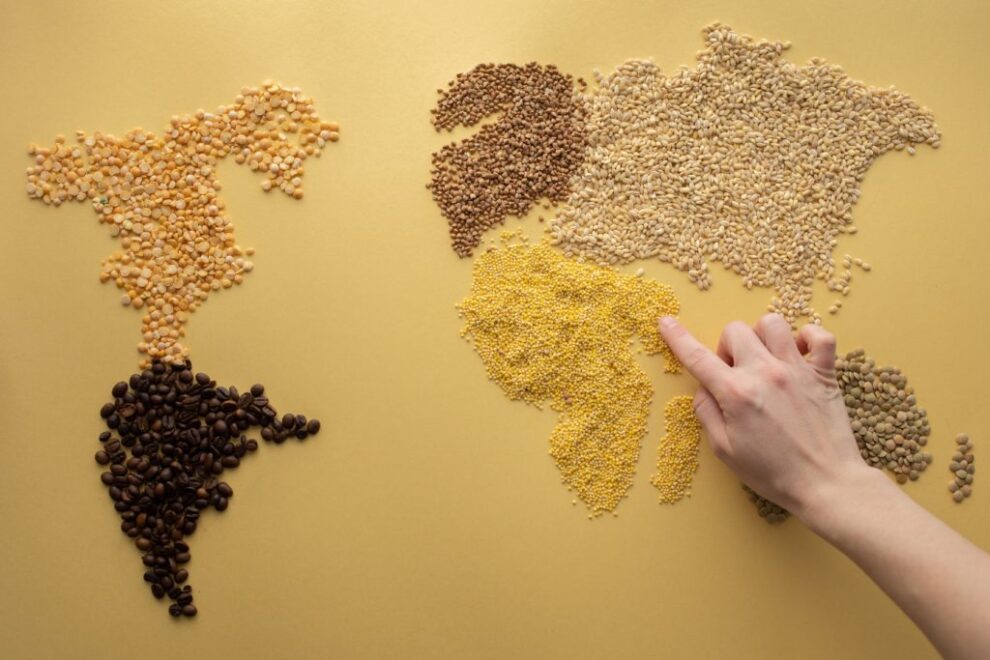The nation’s increasing diversity is reflected in the selection of cross-cultural cooking as Food Trend of the Year by marketing and communications firms af&co and Carbonate.
Some restaurants are eschewing rigid authenticity and instead looking to create interesting flavor experiences by combining ingredients and forms from multiple cuisines, the companies found in their annual Hospitality Trends Report for 2024.
“This is America right now. It’s a melting pot,” said Andrew Freeman, founder of af&co and cofounder of Carbonate, in a webinar unveiling the report. “Instead of hanging on one cuisine, it is hanging on the experiences of the chefs and the teams.”
Examples include Fatima’s Grill in Southern California and New York, which features Halal Mexican Mediterranean fare that went viral for its Shawarma Crunch Wraps. Fatima’s also offers a bottled Lebamex hot sauce, which it describes as Lebanese hot sauce with a Mexican twist. Another example is Ramen Del Barrio in Austin, Texas, a Japanese-Mexican mash-up that offers dishes such as Menudo Tonkotsu Ramen with honeycomb tripe, guajillo salsa tare, chili oil, and hominy.
The report’s cuisine of the year for 2024 is Korean, which has been gaining traction, along with other Asian cuisines, for the past several years. Young consumers in particular are interested in Korean cuisine and Korean culture in general. Korean restaurants representing a diverse range of the cuisine have been cropping up across the U.S., including fast-food fried chicken, communal cook-it-yourself barbecue, hot-pots, high-end steakhouses, casual bakeries, and luxurious fine dining, Freeman said.
Philadelphia was named Food City of the Year, cited by the report as “becoming a hotspot for culinary creativity and unleashing unexpected restaurant concepts.” Examples of the innovative restaurants that have emerged include Heavy Metal Sausage Co., which is a butcher shop by day and a trattoria two nights a week, and Her Place, an “intimate and intensely personal” supper club.
“They are really loving good food right now,” said Freeman. “It’s such a blend of cultures in Philly.”
The report dubbed pavlova, or a variation called Eton mess, as Dessert of the Year, citing its suitability for group gatherings and the fact that considered a relatively light dessert, made with layers of fresh fruit, meringue and whipped cream.
The Drink of the Year was the caprese martini, which often incorporates the flavors of tomato, olive oil, and basil. It is part of the broader trend that combines savory kitchen ingredients into cocktails, from beef tallow to chicken bouillon. Monosodium glutamate (MSG) is also showing up in more cocktails to add an umami taste.
Top Food Trends
The report singled out several food trends that are gaining traction in foodservice, including some that also have emerged in retail CPG products.
• Uni — The edible meat of the sea urchin “has a luxury note” that has made it an appealing ingredient on high-end menus, said Leith Steel, senior strategist and head of insights at Carbonate. She cited Little Mad in New York as an example, where the restaurant will add uni to any dish on the menu for an extra $25.
• Borek — Also spelled bourega or borekas, these savory, filled pastries are similar to spanakopita, and are found in various forms in cuisines across the Balkans, Greece, Turkey, the Middle East, Central Asia, and parts of Northern Africa. Common fillings include ground meat, cheese, spinach, or potatoes.
• Mortadella — This emulsified meat “is definitely having a moment right now,” said Steel, noting that chefs are increasingly making it “using anything but pork” — including guinea hen, octopus, and duck. It’s even used as a pizza topping, paired with pistachio cream.
• Buckwheat — Prized for its health properties as a gluten-free, high-fiber ingredient as well as for its slightly nutty flavor, buckwheat has been showing up not only in Japanese soba noodles, but also in desserts, from cookies to ice cream.
• Celeriac — This hearty vegetable—essentially the bulbous root of the celery plant—holds promise as a center-of-the-plate meat replacement. Chefs are increasingly treating it like meat, including smoking it, or poaching, breading, and frying it.
• Shrimp toast—This classic Chinese appetizer is being recreated in new ways on menus, such as at Piglet & Co. in San Francisco, which offers a Honey Walnut Shrimp and Pork Toast made with toasted milk bread, panko-fried shrimp, pork hash, burnt honey mayo, and candied walnuts.
• Pop Rocks—This retro candy is increasingly appearing in savory dishes, providing a “sense of fun” in a variety of unexpected places, said Freeman. At Bombolo in Chapel Hill, North Carolina, Pastrami-Crusted Carrots are garnished with yogurt and Pop Rocks, for example, and ZAI Restaurant & Bar in Las Vegas offers Corn Ribs topped with cotija cheese, Tajin, cilantro and Pop Rocks.
• Breadfruit—This sustainable, environmentally friendly product “will be one of the superfoods we see more of” in retail products, said Steel. Already a staple in many tropical countries, it is known for being energy-rich, low-fat, gluten-free, and high in fiber and minerals. It can be found in products such as Ulu Chips and dishes prepared similarly to patatas bravas, for example.
Other food trends cited in the report included Brazilian pizza; new forms of algae being used in CPG products; and shio kombu, which are seasoned sheets of seaweed that are dried and crumbled, often used as a topping.
Source : Specialty Food































